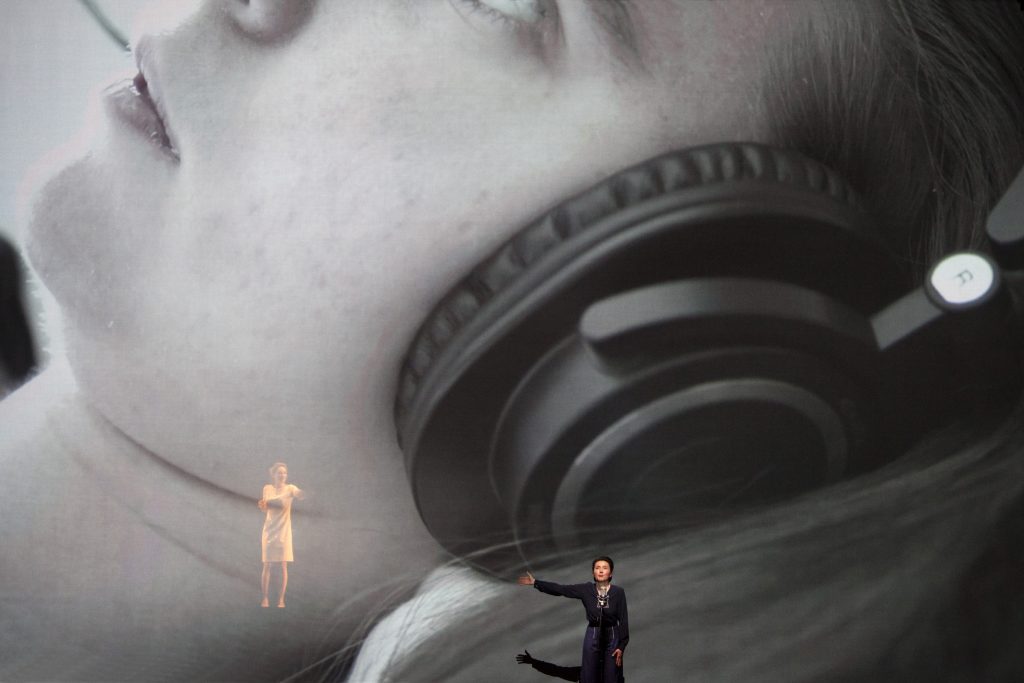
Monday, November 20, 2017, 6:00pm
Harold Prince Theater at the Annenberg Center for Performing Arts at the University of Pennsylvania
3680 Walnut Street
Philadelphia, PA 19104
The Center for Italian Studies and the Annenberg Center for the Performing Arts at the University of Pennsylvania present:
Screening of the filmed performance of:
Orphée et Eurydice
Music by Christoph Willibald Gluck
Version by Hector Berlioz (1859)
Direction, sets, lighting, costumes: Romeo Castellucci
Conductor: Hervé Niquet
Artistic collaboration: Silvia Costa
Dramaturgy: Piersandra Di Matteo and Christian Longchamp
Video / steadycam: Vincent Pinckaers
Choir conductor: Martino Faggiani
Choir conductor, La Choraline: Benoît Giaux
Orpheus: Stéphanie d’Oustrac
Eurydice: Sabine Deiveilhe
Cupid: Fanny Dupont
Orchestra and Choir of the Theater La Monnaie, Brussels
Members of the youth choir La Monnaie La Choraline
Principal violin: Eugenia Ryabinina
Film director:
Myriam Hoyer
Production of the performance:
La Monnaie ¦ De Munt & Wiener Festwochen
A project in collaboration with Wiener Festwochen, promoted by La Monnaie
Production of the film:
La Monnaie ¦ De Munt
© La Monnaie – De Munt, 2014
Film running time: 90′
North American premiere
—————-
The screening will be introduced by Dr. Piersandra Di Matteo (Fine Arts Academy, Bologna), who was dramaturg for the 2014 production.
The event is organized in collaboration with the Program in Cinema Studies and the Departments of Music and Romance Languages (Italian Section) of the University of Pennsylvania.
Free admission.
The myth of Orpheus offers Castellucci the opportunity to reflect on the unfathomable condition of being in a coma, with a dramaturgy that will unavoidably shape the way in which musical theatre is conceived today. The film version of Orphée et Eurydice allows the audience to re-live the exceptional experience of a unique dispositif capable of joining together the music played in the La Monnaie theatre and the room in the Inkendaal rehabilitation centre where Els, a young woman affected by Locked-in syndrome, listens in real time to music and singing through headphones. In the same way, the spectator, a new version of Orpheus, travels away from the theatre thanks to a steadycam that, at every performance, runs through the city streets and the hospital corridors to join Els and meet her eyes. Mythology and Christoph W. Gluck’s music become mirrors through which human frailty is reflected, not in a voyeuristic manner, but to acknowledge art’s “duty to reflect on the human condition, including the most extreme” (Romeo Castellucci).
———————————————————————
New York Times review of the Brussels premiere (July 1, 2014)
———————————————————————
The Center for Italian Studies at Penn warmly thanks:
Piersandra Di Matteo
Nicola Gentili
Rebecca Goering
Christopher Gruits
David Konyk
Adam Riggar
Carrie Reynolds
Nick Stuccio
Bernd Uhlig